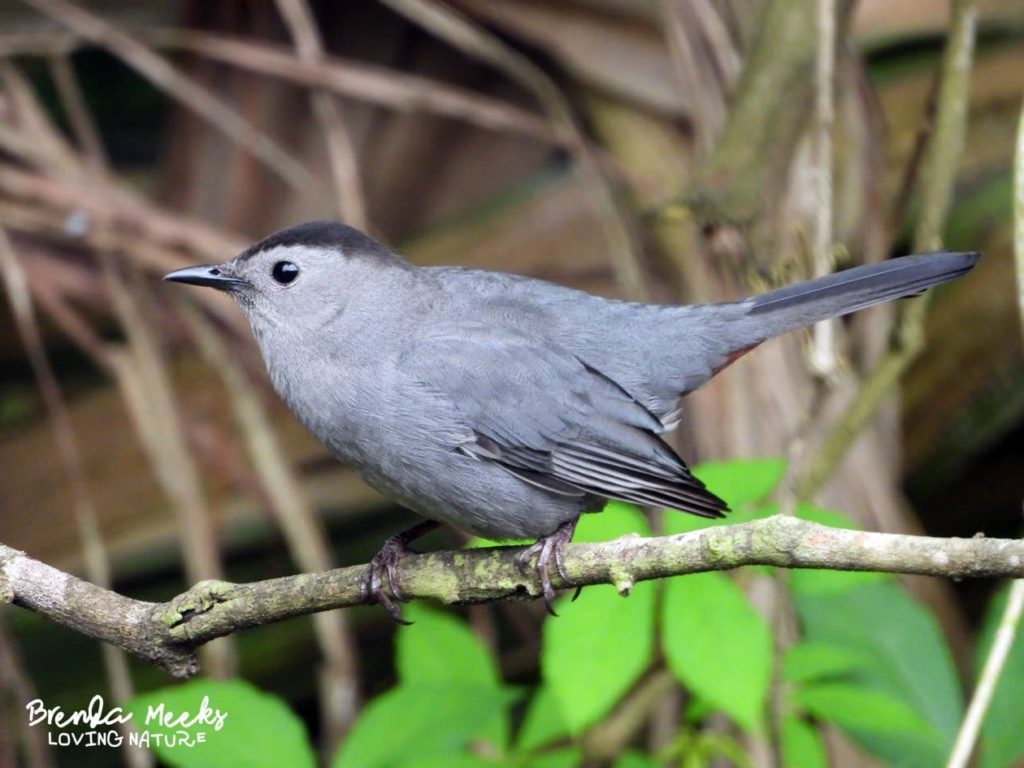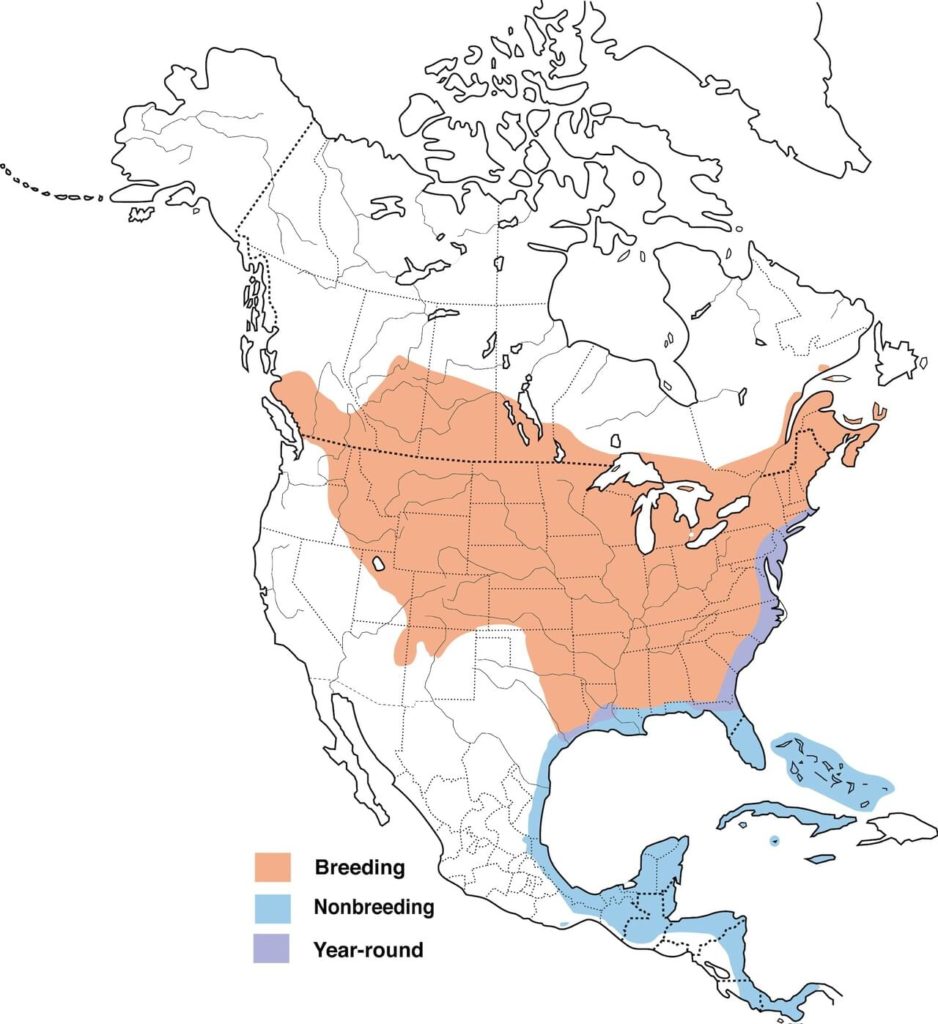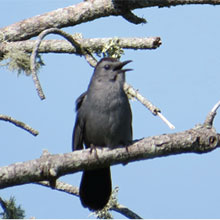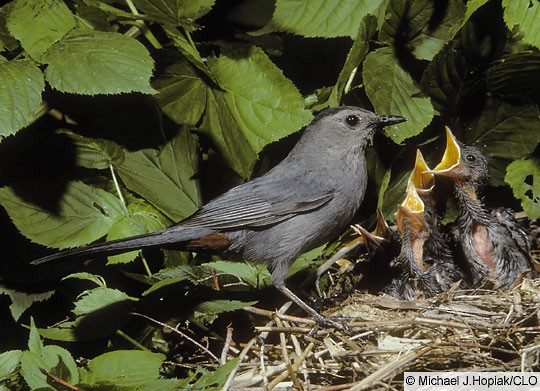by Doug Becker

I’ve always been a fan of the Gray Catbirds. No, they’re not the most colorful in our gang of backyard regulars, but the gang wouldn’t be complete without them. Their steely gray coloring is accented only by a black cap, and some bright rusty feathers under the tail. These medium-sized, long-tailed songbirds are related to Mockingbirds and Thrashers. These birds find home in the lower bushes, brambles, and thickets around our yards.

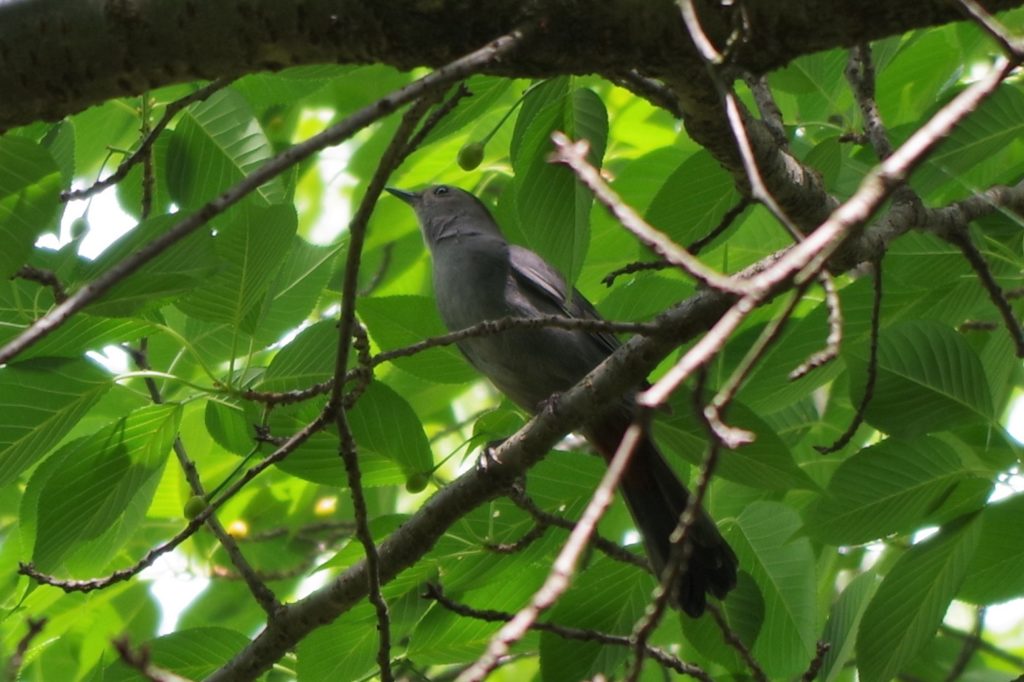
If you’re just starting to identify birds by their sound, ya gotta start with the Gray Catbird. Their distinctive “mew” sound is obviously how this common songbird got his name. If you’re thinking that mew sound is just some feral cat out in the bush, you better listen again! However, just like the Mockingbirds and Thrashers, the Gray Catbird can imitate the sounds of other birds. In fact, they will string together other bird’s sounds to make up their own song that may last for over 10 unbroken minutes. This is usually performed at the top of a thicket to mark his territory. With his long tail straight down and his back arched, he may look a little hunchbacked as he floods the area with his song. So, here’s the challenge. Are you listening to a Thrasher, a Mockingbird, or a Grey Catbird? Well, wait for the mew, and then you will know.
Like many of our backyard regulars, the Gray Catbirds enjoy a wide-ranging appetite. During summer months they will eat ants, beetles, caterpillars, grasshoppers, moths and the like. As berry season rolls in, Catbirds will eat nearly any berry available. Any garden with berries may need to be watched closely. Catbirds are ground foragers, but sometimes will come to the feeder. However, offerings of fruit, berries, suet, sunflower hearts, and nuts would be an offer they can’t refuse. A while back, my wife added a low decorative bird bath with a solar bubbler to keep the water moving. This bird bath sits only 8-10 inches off the ground, and attracts Jays, Brown Thrashers, and Gray Catbirds. Fun to watch!
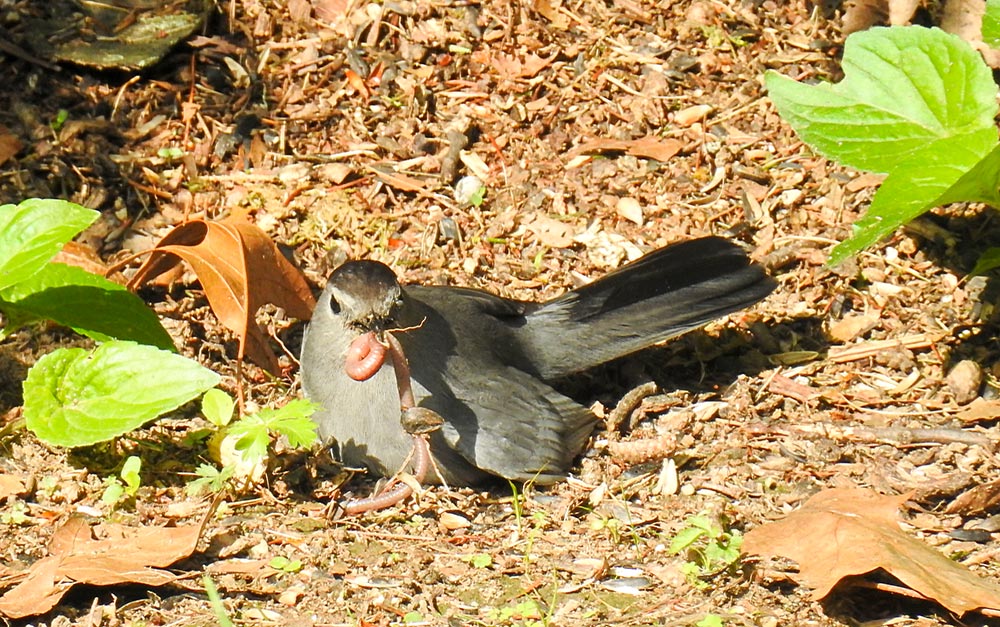
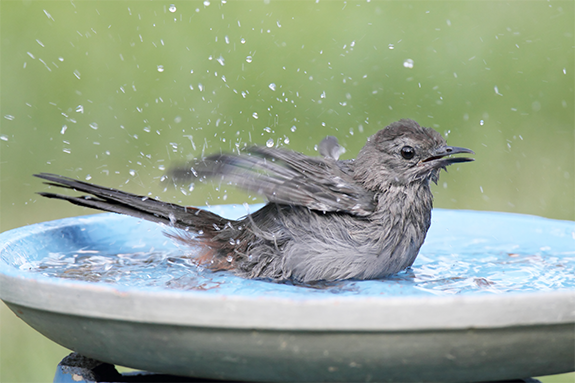
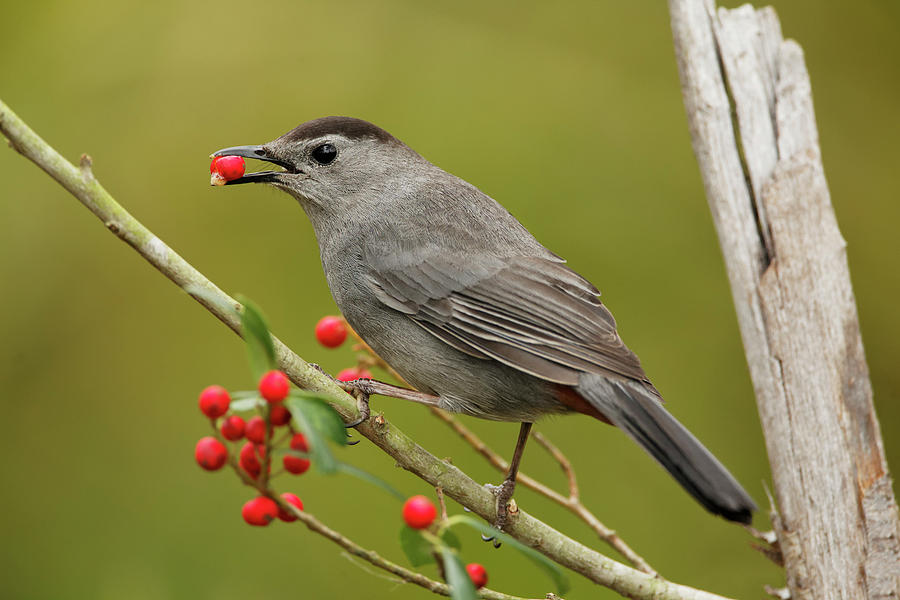
It’s good to know that the Gray Catbirds’ range covers all of southern Canada, most of the United States except the west coast and south-western states. Their range also covers all of the Gulf shores through Mexico and over through Cuba and the islands. In the cold months, Catbirds will migrate from the north to our southern and eastern shores and further south. Point being, the Gray Catbird is available for most of us to see and enjoy.
Although Catbird nests can be seen as high as 60 feet in some trees, most commonly they nest on horizontal branches deep within thickets and brush no more than 4 feet off the ground. The female builds the nest, and the male will, sometimes, bring some building supplies. It takes 5-6 days for the nest to be completed, and the final product is a bulky, open cup nest made mostly of twigs, straw, bark, and mud. The cup is lined with finely woven grasses, rootlets, hair, and pine needles. When all is done, the nest will measure about 5.5 inches across and 2 inches deep. Even though the female does all the work, the male’s duty is to sit on a high branch singing songs to notify others of his territory. What a deal!
A female Gray Catbird will lay 1-6 eggs 2-3 times per year. That can make for a lot of chicks, and a busy mother. Incubation time is 12-15 days, and nest time for the chicks is 10-11 days. Mates are monogamous throughout the nesting season. As winter develops, the male and female establish and defend separate territories, and by the time spring comes around, they have pretty much forgotten each other.
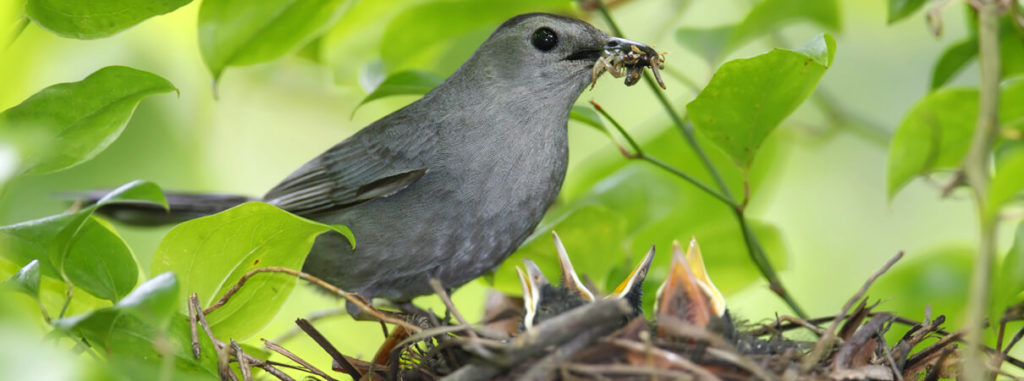
The Gray Catbird has lots of personality, everything from introvert to extravert. But here’s what’s unique. With patience and some gentle persuasion, people can gain a Catbird’s trust and develop a friendship. If you’re feeding Catbirds in your backyard, reach out and make a friend. If you have no Catbird habitat around home, you can find them in dense brush, vine tangles, and thickets of young tree growth. For me, I’ve always been a fan of the Gray Catbird weather at home or in the wilds. I suggest grabbing your birding essentials…. a cozy chair, the Merlin ID app on your cellphone, binoculars for everyone and take a few friends or family on an all-day bird watch! Put this delightful songbird on your list to see! I’ll see ya out there!
